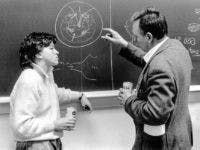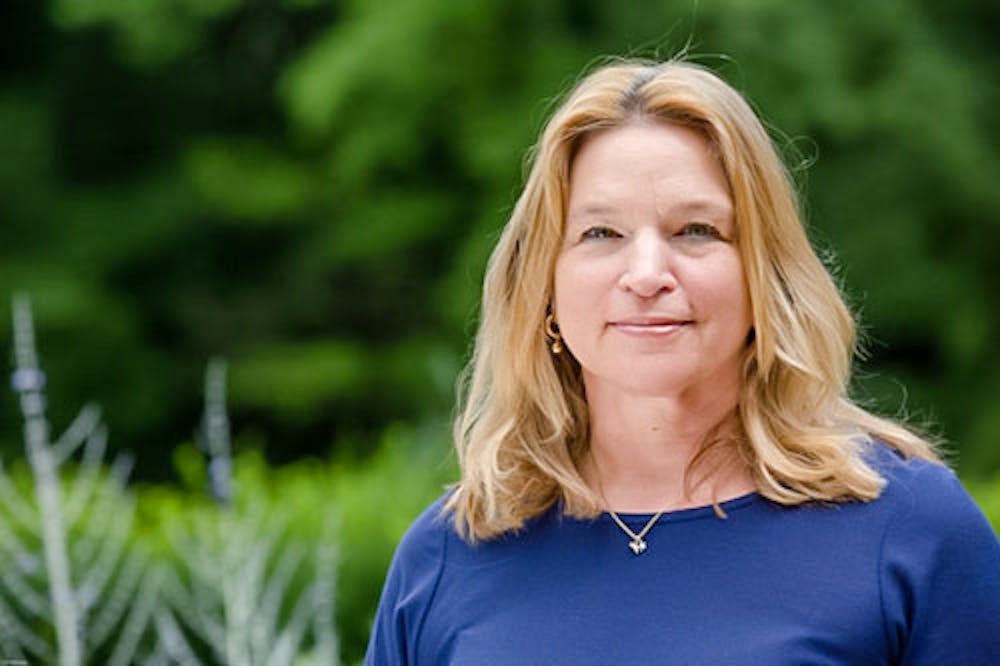Planetary Geologist Ellen Stofan ScM’85 PhD’89 attended her first rocket launch when she was four years old. Since then, she has spent over 20 years at NASA, served as chief scientist of NASA from 2013 to 2016 and was named leader of President Joe Biden’s NASA agency review team in November. Since 2018, she has served as director of the Smithsonian’s National Air and Space Museum, the first woman to hold the position.
Stofan formally began her journey in space research as a University PhD student under the advisorship of Professor Emeritus of the Geological Sciences Jim Head. At the time, Head was an investigator on what would ultimately be called the Magellan mission, which aimed to send a spacecraft to Venus to map the surface of the planet in detail for the first time. Stofan traveled to Russia, then the Soviet Union, as part of the Brown-Vernadsky Institute exchange program, which Head had established, to conduct research using data from the Soviet Venera spacecraft’s flights to Venus.
Stofan “did a wonderful job there, and of course she went on to be a pioneer in the field of Venus geology,” Head said.
Head added that as a PhD student, Stofan would consider many pieces of information to approach a scientific problem holistically. “It’s not just looking down the tube of a microscope,” but “what’s the context?”
Stofan’s time at Brown impacted her career trajectory. “Being at a place like Brown, which is right at the cutting edge of what’s going on … I felt incredibly lucky,” she said, adding that her experiences at the University convinced her that she wanted a career in planetary geology and “set (her) up for success.”

After attaining her PhD at the University, Stofan joined the NASA Jet Propulsion Lab as deputy project scientist for the Magellan mission. The lab successfully launched the Venus Radar Mapper to detail the surface of the planet in 1989.
Stofan later worked on the Cassini mission to Saturn, which sent the first ever man-made object into the outer solar system. She also served as chief scientist for NASA's New Millennium Program, which tested ways to integrate new technologies into spaceflight.
Stofan’s wide-ranging experiences in the areas of geology, technology and human spaceflight eventually earned her the position of chief scientist of NASA. During her three years in the role, she oversaw science strategy across NASA’s field centers and worked on “future-leaning” issues such as space tourism.
She was heavily involved in planning a mission to Mars, which NASA hopes to accomplish over the course of the next 15 to 20 years.
“You can’t just say, ‘Lets go to Mars!’,” Stofan said. “You have to plan the architecture” and use “a stepwise approach that builds on technology, builds on expertise and all the while (try) to keep the humans involved safe.”
Stofan explained that along with the technical requirements of engineering the spacecraft, there were other aspects to consider, such as developing functional artificial intelligence to support crew members in space.
“It’s fun to think about because it’s this huge problem with all these different aspects,” she added.
In fall 2020, Stofan was appointed leader of President Biden’s NASA agency review team. The team was designed to brief the then-incoming Biden administration on NASA activities and ensure a smooth transfer of power, according to the agency review website.
“It’s really remarkable for her to have been chosen for (the team). That’s just such a great honor,” Head said. “It’s a really great testimony to the kind of education you get at Brown and the kinds of challenges you face and opportunities that you have. I’m really proud of her.”
Professor of Earth, Environmental and Planetary Sciences and Environment and Society Jack Mustard, who was a University graduate student at the same time as Stofan, said that the leadership skills that Stofan is currently demonstrating in her roles were present since their time together at the University. “She had a lot of good ideas on what to be doing with planetary sciences and where we might go as a nation.”
Since 2018, Stofan has been the director of the Smithsonian’s National Air and Space Museum. Her passion for science education prompted her to take the position after her resignation from NASA at the end of the Obama Administration.
“I really care about (STEM) and how … we change the face of STEM to make it look more like the face of our population,” Stofan said.
As a child, Stofan had felt a career at NASA wasn’t “accessible” because “everyone who worked for NASA looked like my dad — a guy with a crew cut.” As director of one of the most frequently visited museums in the nation, she wants to use her position to inspire as many people as possible to be passionate about science, no matter their background.
Stofan aspires to celebrate the space-related accomplishments of people from diverse backgrounds “so that every kid who comes to the (Smithsonian’s National Air and Space) museum can see that people who look like them have already accomplished great things.” She hopes to highlight the legacy of trailblazers like Charles Bolden, the first Black NASA administrator, and Ellen Ochoa, the first Hispanic American woman to go to space.
To generate excitement about space in future generations, Stofan also aims to exhibit and celebrate past achievements through events. For example, during the 50th anniversary celebration of the original 1969 moon landing that the Air and Space Museum hosted in 2019, the museum projected a viewing of the original space landing onto the Washington Monument.
But Stofan believes that understanding upcoming developments in spaceflight is just as important as understanding the past. “We are a history museum, but we are also a museum of the future,” she said.
Stofan hopes to guide the museum towards “being a little more forward-leaning in our content, and a lot more inclusive.”





